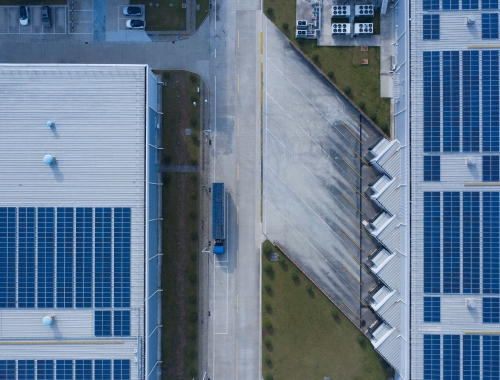Thermax eyes India's burgeoning bioenergy space: interview
SUMMARY
The company recently secured an order worth over 5bn rupees ($60mn) from an unnamed energy conglomerate to set up five bio-CNG plants across India. [Image credit: Thermax]
By Shardul SharmaThermax, a leading Indian energy and environment solutions provider, recently secured an order worth over 5bn rupees ($60mn) from an unnamed energy conglomerate to set up five bio-CNG plants across India. The company has plans to further expand in the bioenergy space to help industries transition to clean energy.
Deodatta Deshpande, the CEO of Thermax Bioenergy Solutions, discussed the recent order, the company's future plans, government policies, and the overall outlook for the biogas and compressed biogas (CBG) industry in India in an exclusive interview with GasPathways.
Thermax will develop five bio-CNG plants for an energy conglomerate. When will the plants be ready to be commissioned?
Thermax's five compressed biogas plants will be set up in the states of Rajasthan, Madhya Pradesh, Maharashtra (2) and Uttar Pradesh, with the capacity to produce 110 tonnes/day (TPD) of CBG. These plants will utilise local feedstock exceeding 1,000 TPD, which includes rice straw, napier grass, cane trash and soya trash. The biogas generated from these plants will be employed by the customer for commercial use in transportation and industries. These plants are scheduled to be operational within 12-15 months, creating 150-200 job opportunities for the local community.
This is part of Thermax's broader initiative to introduce solutions around bioenergy to help industries transition to clean energy.
Is the company planning other such projects for other customers?
As a trusted partner in energy transition, we are constantly looking for opportunities to deliver solutions to customers that help them move to cleaner sources of energy. Besides the recent order to deliver five CBG plants, Thermax Bioenergy Solutions Private Limited (TBSPL) has commissioned two CBG plants for a customer in Dhuri and Patran, located in the state of Punjab. It is remarkable to note that these plants utilise 100% rice straw as feedstock. The effective utilisation of rice straw is pivotal in addressing the annual stubble burning ritual in North India, a primary cause of smog.
Interestingly, as per the views of global experts, there are no other plants which operate exclusively on rice straw. Hence, this attempt of Thermax has a very special place on the global CBG landscape.
This is just the beginning of our CBG journey, with numerous upcoming milestones. We are currently also working with other major conglomerates and climate funds in various states of India to develop CBG plants based on different feedstocks.

Deodatta Deshpande, CEO of Thermax Bioenergy Solutions
Several companies have announced plans to set up biogas/bio-CNG/CBG projects in India. What potential do you see for sector in the near future?
India's agriculture sector generates hundreds of tonnes of crop residue and biomass every year, which presents a considerable opportunity. Approximately 234mn tonnes of agricultural residue holds a CBG potential of about 7.5mn tonnes/year, while municipal solid waste offers an additional 90mn tonnes/year with a CBG potential of about 3.8mn tonnes/year. The Indian government's Sustainable Alternative Towards Affordable Transportation (SATAT) scheme actively promotes the establishment of biomass-based CBG plants. Furthermore, this initiative aligns well with the global commitment towards sustainable practices, evident in the COP28 agreement signed by 195 nations, emphasising the urgency to phase out fossil fuels.
All these prospects indicate that, as we navigate this crucial moment in the energy transition, the CBG sector holds immense potential. Over the next 7-8 years, we anticipate the establishment of more than 1,000 plants, utilising diverse feedstocks and contributing significantly to sustainable energy practices.
India last month announced a phased mandatory blending of CBG in CNG and domestic piped natural gas (PNG) segments starting the fiscal year 2025-26. Will this help the country reduce imports of LNG?
The SATAT policy does not entail a take-or-pay arrangement, indicating that there is no assurance of 100% gas sale of the CBG produced. The proposed blending obligation offers a solution to ensure 100% utilisation of the gas produced by injecting it into the gas grids. This makes investments in the industry more appealing for developers.
Looking forward, with the assumption of 1,000 CBG plants being established over the next 7-8 years, each with a capacity of 10 TPD, it is estimated that they would collectively produce 3.6mn tonnes/year of CBG. This substantial output could potentially contribute to a reduction in the country's LNG imports, possibly saving approximately $1.6bn/year.






